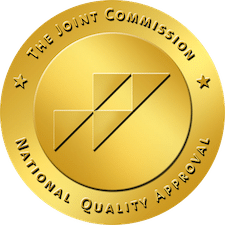
Dissociative Identity Disorder Treatment in California
Dissociative Identity Disorder (DID), previously known as Multiple Personality Disorder (MPD), is marked by ordinary forgetfulness caused by distinct fragmented states of personality. These memory gaps and alternating behavior is commonly distressing for the person with the illness as well as the people around them. However, people with DID may be able to find some relief in reducing their symptoms through treatment offered at Southern California Sunrise Recovery’s Mental Health Center in Mission Viejo, CA.
Related Resources
Home » Treatments » Dissociative Identity Disorder
Table of Contents
What Is Dissociative Identity Disorder (DID)?
Previously called multiple personality disorder, dissociative identity disorder, or DID is a medical condition that targets an individual’s feelings, thoughts, and other emotions that directly associate with the state of their mental health. Mental health professionals involved with the American Psychiatric Association characterize people with dissociative identity disorder primarily by having two or more distinct identities or personalities present at any given time. Dissociative symptoms typically occur when having previously suffered a traumatic experience, such as verbal or sexual abuse.
Not being terribly popular in society, it may surprise some to learn that dissociative identity disorder is not a rare mental health condition. Studies have shown that it affects approximately one to two percent of the world’s general population.
This mental illness is considered to be one of the most prevalent conditions as the result of a traumatic event or other traumatic memories previously experienced during childhood. Co-occurring conditions that accompany dissociative identity disorder are frequently found and typically produce even more difficulties when trying to manage the symptoms.
These co-occurring complications often include the following:
- Post-traumatic stress disorder (PTSD)
- Major depression
- Severe memory loss
- Substance abuse and addiction
- Heightened Anxiety
- Dissociative amnesia
- De-personalization or de-realization disorder
- Eating disorders
- Borderline personality disorder
Treatment Options For Dissociative Identity Disorder
The goals during dissociative identity disorder treatment are mostly to provide the patient with effective relief to the symptoms they may be experiencing. By offering each patient the necessary entities such as comfort and safety, family members can rest easy knowing that their loved one is being taken care of professionally. Attempting to “reconnect” the various personalities into a single unified identity is the primary objective therapists and patients try to meet.
Determining the best approach to treat each patient depends on the specific needs and unique circumstances of each case. Possible triggers and levels of severity are shown in the visible symptoms. Both play a major role in this determination.
Standard treatment methods typically include one, or a combination of two or more of the following options:
Relaxation Techniques and Meditation
Trained therapists are able to coach patients using a variety of practices meant to help the patient relax and tolerate their dissociative symptoms much more manageable. By doing this, patients learn how to become more aware of their thoughts and intentions, which naturally improves the state of their mental health.
Forms of Psychotherapy
Psychotherapy treatment options, which are often referred to as “talk therapy,” is the most common and considered to be the main form of treatment for dissociative disorders like DID. A quick Google search will show that the word “psychotherapy” is a broad term that includes many forms of therapy that differ one from another.
Family Therapy
Therapy that is done with family members present significantly helps all parties learn more about the disorder and the struggles caused by it. Helping family members be able to recognize and identify some of the associated symptoms so that the proper actions can be taken to decrease the effects and keep the conditions from worsening.
Cognitive-behavioral therapy (CBT)
CBT is a popular type of psychotherapy designed to focus primarily on properly correcting unhealthy and dysfunctional thinking patterns. Other thoughts, feelings, and behaviors can also be affected during this form of therapy.
Dialectical-behavior therapy (DBT)
Therapists use DBT methods when patients exhibit extreme personality disorders. This often includes different dissociative disorder symptoms that are happening because of some form of childhood trauma that was experienced.
Eye Movement Desensitization and Reprocessing (EMDR)
Mental health professionals prefer using EMDR methods when treating patients who are experiencing frequent flashbacks and nightmares, among other symptoms that are commonly produced by post-traumatic stress disorder (PTSD).
Medications
Although there are not any medications to specifically treat dissociative disorders, there are some that reduce the symptoms and can significantly help many situations. These known medications are proven to be an effective treatment resource to help with depression or anxiety. For example, patients may improve their depression symptoms by receiving a written prescription from a certified therapist or doctor for an anti-anxiety or antidepressant medication.
How To Prepare For Your Appointment
Going to the first appointment can be a stressful and sometimes scary situation for many people. Below are a couple of helpful tips and suggestions that can help make the process easier and more effective. It helps the therapists a huge deal if they are able to obtain any individualized information regarding their patient and the circumstances that face each of them.
One way is to make a list of:
- Any symptoms you have been experiencing. As well as for how long they have been occurring and the severity in which they have been appearing.
- Any key personal information, such as any major events that have made any symptoms worse, or any other experience that was significant enough to cause excessive stress or discomfort. It is also essential to include anything specific about the past, which may be the reason for the development of the disorder in the first place.
- The past and present medical information are also beneficial to know about prior to beginning dissociative identity disorder treatment. This information should include any vitamins, minerals, herbs, supplements, and other medications that you are currently taking.
- It is also encouraged to think about and have ready and written out (if needed) the questions that you may have for the doctor or therapist. In efforts to make each therapy session as effective as possible, it is crucial to get the absolute most out of each therapy session.
Get DID Treatment in Mission Viejo
Do yourself a favor and get professional help for you or your loved one’s Dissociative Identity Disorder. Don’t let mental illness get in the way of living a happy fulfilling life.
The talented staff at SCSRC’s Mental Health Center in Mission Viejo ardently takes on the mental health challenges with our patients, doing everything in our power to bring more joy into the lives of those we touch.
Our leading therapists, psychologists, and psychiatrists develop a personalized treatment plans unique to each patient. We want to cater treatment that is specific to you. Let’s work together to build a plan that is effective for you.
Call today and let’s get started!
Clinically Reviewed By:
Dawn Masick, LMFT
Dawn has experience dealing with various relational, emotional, and psychological struggles. Dawn’s training has prepared her to work with children, teens, young adults, adults, couples, and families. She has undergone training in DBT, TF-CBT, and Family Therapy. Other competencies include dealing with ADHD, mood/anxiety disorders, parenting challenges, addiction, PTSD, co- dependency, and relationship issues. I have experience in residential, school-based mental health, children’s community mental health, victims of crime (VOC), and private practice settings.
Dawn has been committed to guiding clients through their trauma, coming alongside them in their healing, and supporting them as they navigate life changes. Dawn’s passion is working with clients struggling with trauma in substance abuse and mental health.
